Blog
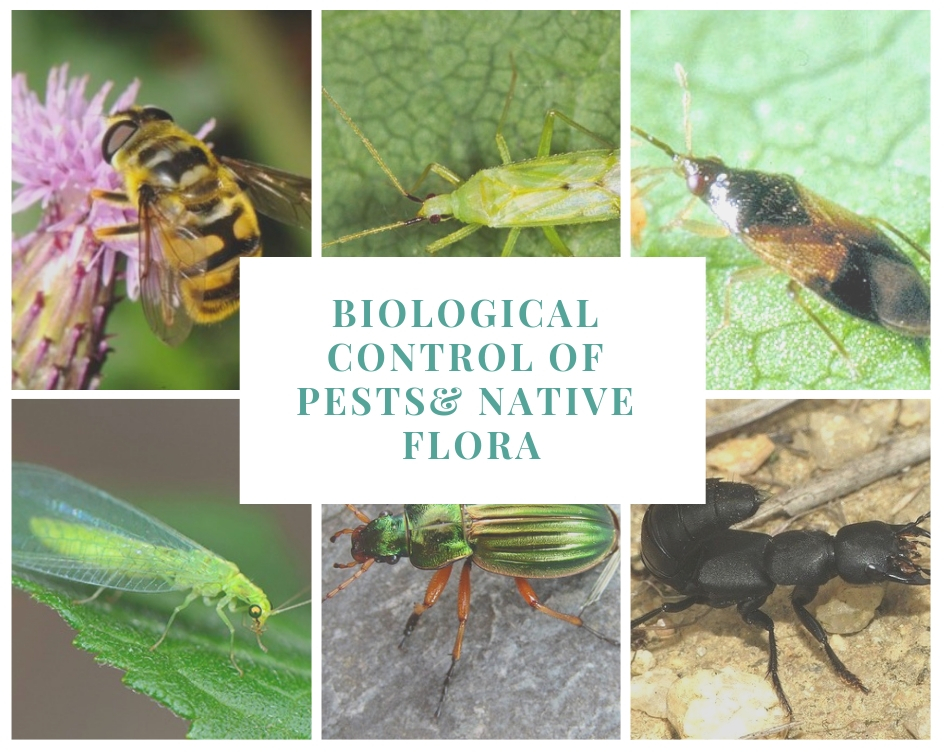
How to stimulate biodiversity and the biological control of pests
Futurcrop - 18-02-2019
The effect of chemical insecticides against pests, and also against their natural predators, and the simplification of the agricultural landscape, indiscriminately eliminating weeds, the native flora and shrub as a reservoir of useful fauna, are some of the main causes of the problem of the current proliferation of pests in the Agriculture.
Agriculture considered as an industrial process of food production, which increases production at the lowest cost and accelerates processes through chemical products, has caused serious environmental problems for years. Among other things, this production system favors the cleaning of fields of bushes, hedges, trees and shrubs. But this practice supposes the reduction of biodiversity in the agricultural landscapes and the elimination of the proper habitats of the native species of predators and parasites of plagues, and causes therefore a greater vulnerability of the crops to pests and diseases.
This intensification in agricultural production creates a high pressure of pests and diseases on crops, which is usually controlled with chemicals insecticides. However, numerous investigations show that the indiscriminate use of agricultural insecticides causes damage to the environment, to the farmer´s health, and to the consumer himself through chemical residues in the crops. Knowing the damages that these products can cause, the usual practice of the systematic use of phytosanitary products in agriculture is justified...
Read more

Climatic Change and pest prevention technologies
Futurcrop - 26-11-2018
The increase of temperatures due to climate change, can modificate the biological cycle of pests, varying the usual seasons of attacks and favoring short reproductive cycles and therefore multiple generations.
This new situation requires agricultural producers to use technologies that automatically control the biological development of pest in orther to have greater control over their crops. Systems such as FuturCrop acquire timely relevance and become an important tool in integrated pest management. But how the system works?
Temperature controls the rate of development of many organisms. Plants, insects or nematodes, require a certain amount of heat to change their bilogical stage. Pattern recognition systems can identify, based on climatic conditions, the development life cycle of insects and predict the next point in their life cycle. Each species has its own pattern of development and each stage of development differs for each organism. When determining the point of the following life cycle, it allows us to decide, thus obtaining the moment of greatest vulnerability of the pest obtaining the maximum effectiveness of our pest management actions.
Pest development pattern recognition systems are based on mathematical algorithms developed over the years at Research Institues and Universities. The software´s hability for interpreting and continuously learning from the obtained results, adapting them to the specific climatological variables of each zon...
Read more
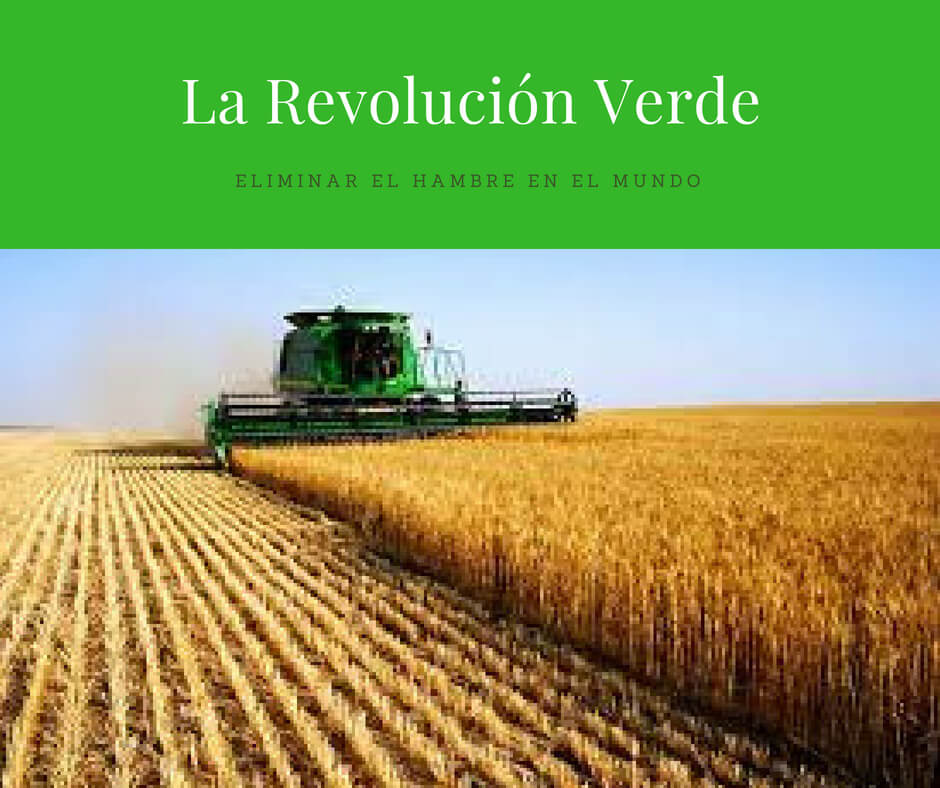
The Green Revolution, or Third Agricultural Revolution
Futurcrop - 21-08-2018
It is constantly repeated that at present the problem of hunger in the world is not a problem of food production, but of distribution of the calories produced. And this validates a agricultural production system that predominates since the 50s, that premium at any cost the productivity per hectare. And it is true that globally agricultural production has increased the yield per acreage.
This model of intensive agricultural production was a revolution in the 50s and was the result, among others, of the work of a distinguished agronomist, geneticist and North American phytopathologist named Norman Ernest Borlaug. The different techniques that promoted the increase in agricultural productivity was called The Green Revolution, also Third Agricultural Revolution, and was based mainly on the use of varieties of high-yielding seeds, cultivated in large areas (monoculture), and the use of large amounts of fertilizers, phytoregulators and pesticides. It was all about adapting, through chemical and mechanical technology, Nature to the human needs of food production. It was the beginning of the process of industrialization in agricultural production. Borlaug is considered by many the father of modern agriculture, and in 1970 received the Nobel Peace Prize for his efforts in the eradication of hunger and malnutrition in developed countries. Also this type of agriculture made possible the internationalization of agricultural marketing.
With funding from the Rockefeller Found...
Read more

The 10 most common errors in pest control
Futurcrop - 30-07-2018
Intensive production agriculture has favoured pest to become on of the major problems of agriculture
The intensive production agriculture has meant the development of isolated environments that benefit the development of pests, an easy source of food. And the repeated and indiscriminate use of pesticides has modified a natural environment in which pests were controlled by their predators. In addition, markets have forced the selection of certain varieties of crops by farmers, plant breeders, and hybrid producers, so that many of the cultivated varieties have been losing part of the natural defense mechanisms acquired over millions of years in that slow co-evolution process.
Erroneous or late identification of the pest.
Difficulty in the Identification of larval stages of pests
Generally, nymphs and larvae are more difficult to identify than adults, but if the pest is not correctly identified, it will be very difficult to apply an effective control strategy.
The identification of pests for the damage they cause
The easiest way to identify a pest is when damage to the plant is done, but that time is usually late to perform a treatment, and the population dynamics of the pest could not be controlled.
Transboundary pests
The trade globalization of plants and crops is causing pests to move into new environments, in which they are not easily identifiable and lack their natural predators.
Late treatments due to unknowing the cycle...
Read more
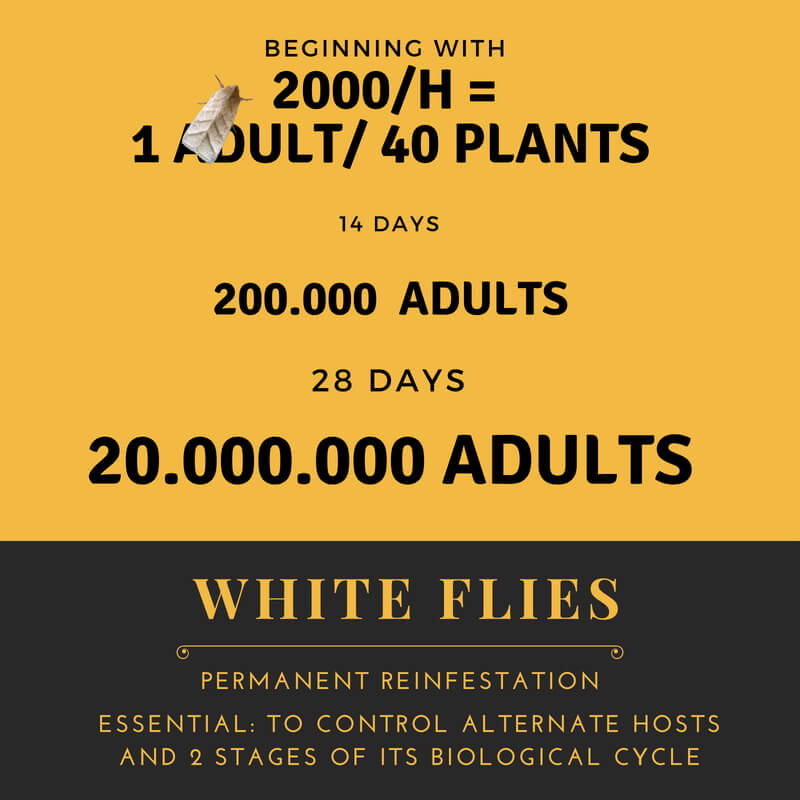
Insects Biological Cycle for pest control
Futurcrop - 09-07-2018
Could be distinguished two groups in the development cycle of pests, depending on their biological stages
APHIDS, WHITE FLY, CICADELIDAE, ETC
Those pests go through three stages in their biological cycle:
eggs
nymphs
Adults
In all the stages of development of the insect, they resemble each other, develop in the same place on the plant and feed on the same parts of it. Using chemical treatments, nymphs and adults are usually eliminated, but usually the plague survives in the egg stage. Therefore, reinfestation depends on the survival of the eggs and the colonization of new populations.
To control the pest should be enough with 2 conventional treatments, 2 applications of agrochemicals, but that is not the usual because they are pests that can be fed from a large number of plants (which are also necessary to control). It is essential to have a tool that allows us to identify the pest, even in the egg phase, and have information that allows us to predict its future development to carry out appropriate preventive actions.
FRUIT FLY, FALL ARMYWORM, COLEOPTERA LARVAE
Those are insects whose biological cycle passes through 4 stages:
egg
larva
pupa
adult
This type of pests is characterized because there is a great morphological difference in its different phases of development, they inhabit in different places of the plant in each phase, and feed differently on the plant. That differenciation of behaviour on its different...
Read more

When a pest reduces the rentability of maize production
Futurcrop - 03-07-2018
Every year the same situation is repeated: uncontrolled infestations of the armyworm (Spodoptera frugiperda) attacking the maize crops of South America and Central America, Africa, India, etc., in large farming areas and causing huge losses to producers.The attacks of the armyworm are endemic in those areas where the climate is favorable for its development: temperatures above 25ºC and relative humidity less than 60%. The lack of rains also favor their rapid development. And the treatments against agricultural pests, preventive or fixed by calendar dates, have very little effectiveness and favor the resistance of pests to pesticides.
LOSS OF CROPS YIELDSIf we consider 5 mt/ha as an average yield in mechanized maize, the losses that can be caused by the fall armyworm can reach the 40%, ie losses of approximately USD416 per hectare, at an average price of 2018. In tropical and subtropical regions, the damages are regularly greater than 60%. In large areas, such as the ones we are talking about, it involves losses of hundreds of billions of $USD.
MISUSE OF PESTICIDESIf under normal conditions, 2 or 3 treatments can be made per season, with a cost of $ USD 109 / MT, an attack of the plague can increase them up to 5 or 7, increasing its cost to $ USD 211 / MT. In fact, in some cases, up to 10 applications can be needed to control the pest. And the cost of the treatment can exceed the sale price of the harvest itself.Crops losses and the increase in the use o...
Read more
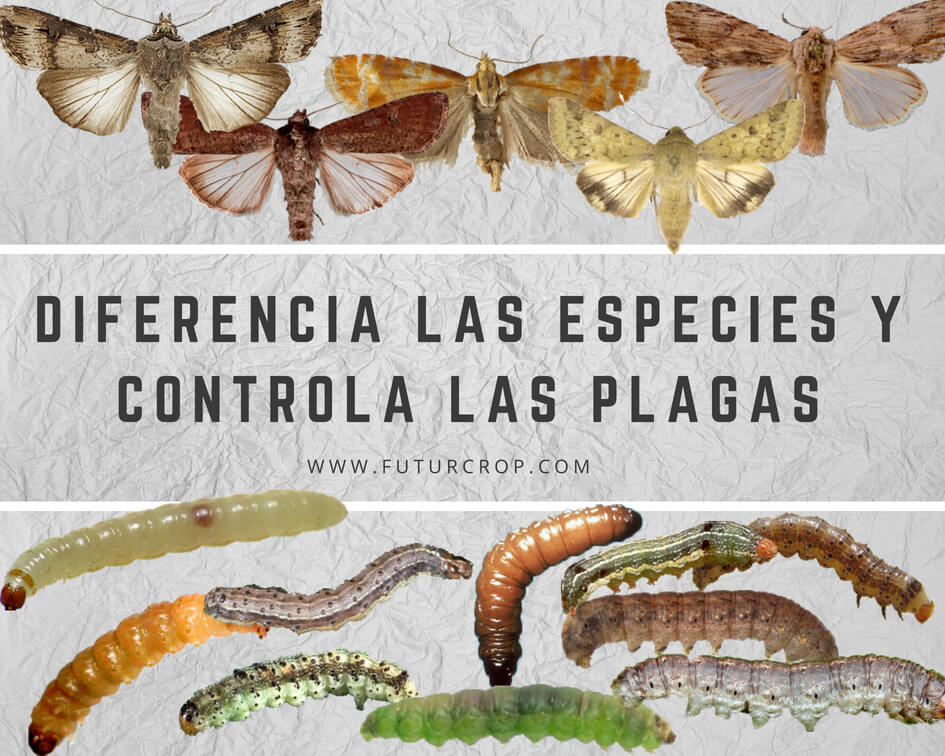
Identification of lepidopteran larvae of agricultural importance
Futurcrop - 26-06-2018
The identification of immature stages of Lepidoptera is possible, but the literature on this is rather scarce. Through FuturCrop's automated and continuous calculation of the phases of the biological cycle of the pests, the genus and species of the pests can be determined, without the need to finish the complete biological cycle, even in the case of pests that have a prolonged biological cycle (larval development can last between weeks and years, depending on the case). The agricultural pest control software sends notices to the user when there are modifications in the phases of the development of the pests and, in this way, through the software it is possible to control the population development, to determine the optimal moment and the opportune way of treatment for your control. Save costs and optimize production.
Lepidoptera are the taxonomic order of insects with more species considered of economic importance due to their pest effect in agriculture. Although the order contains more than 150,000 described species, and it is estimated that they can reach 255,000, there are thirteen superfamilies with species that constitute pests. The damage that the pests of the order Lepidoptera cause to the crops happens fundamentally during its larval phase.
Adults of the order Lepidoptera are, with some exceptions, easy to identify. These are insects with two pairs of wings covered by flat scales, which also cover a good part of the body. But adult lepidoptera do not...
Read more
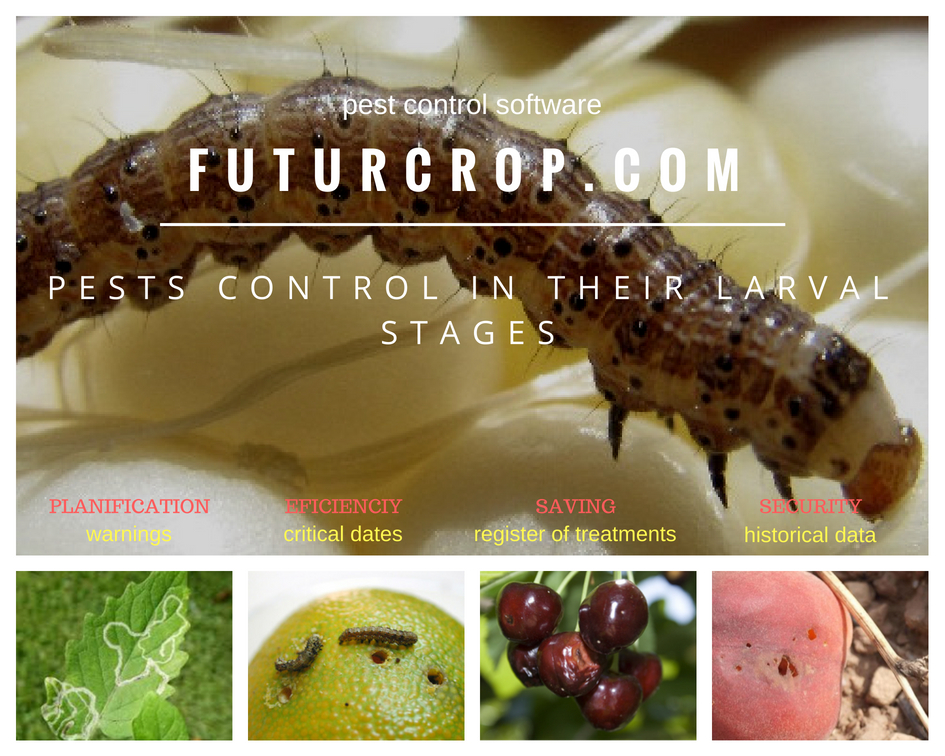
Agricultural pest control in their larval stages
Futurcrop - 29-05-2018
The identification of the pest species that attacks our crops, and the recognition of each state of biological development, is one of the fundamental aspects for and adequate control. Generally 85% of the pests that attack crops belong to orders that develop as larvae. And it is the immature states that cause the most damage to crops. The pupa, the intermediate state between the larva and the adult, does not feed and its mobility is almost nil. In fact, 60% of damage cause by pests ins done during their larval stage. That is so because it is the state of growth and most active feeding, it is the phase in which insects consume more food, and usually the phase that lasts the longest. The food consumed by the larva is much higher in the last instars than in the first, because the larva fully developed is larger and mobile. Adults of fruit flies (eg, Ceratitis capitata and Bactrocera oleae) generally do not cause damage, but their larvae cause serious damage to many cultivated fruits.
Therefore, the identification and control of pest larvae should be carried out in the first instars, in its early stages, because less insecticide is required to kill them, to avoid further damage, and to control the population dynamics,
Therefore, a frequent monitoring of the crops is required. The problem is that the identification of the pest in immature stages is not always accurate.
Using FuturCrop, you will receive warning messages, so, when monitoring cr...
Read more
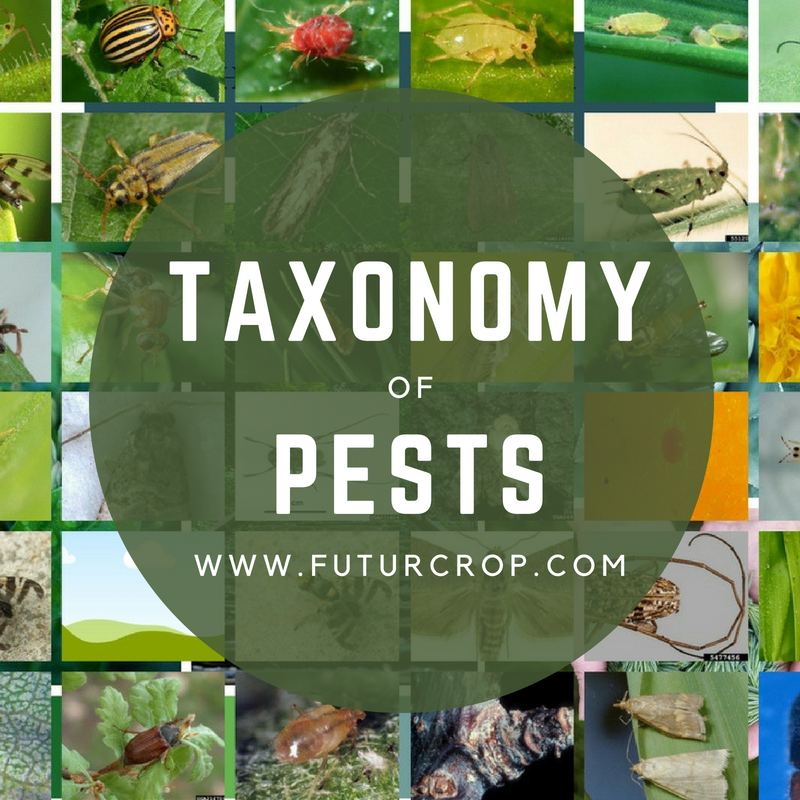
Taxonomy of pests
Futurcrop - 21-05-2018
The Swedish Carolus Linnaeus is considered the creator of the classification of living beings or taxonomy. In his great work Systema naturae, which, with 13 editions, represented 35 years of work, in the 18th century developed a binomial nomenclature system that is still used today, based on the use of a first term, written in capital letters, identifies the Genus, and a second term corresponding to the specific name of the Species, written in lowercase letters. From the most specific to the generic, in a nested hierarchy, grouped species into Genus, Family, Order, Class, Philum, Kingdom and Domain (Later on, the need to detail the classification forced to establish intermediate categories.
According to the taxonomic classification, insects belong to the Arthropoda Philum (such as arachnids and crustaceans), and to the Insecta Class. According to the classification of Linnaeus, the Insecta Class is divided into Orders, depending of certain morphological features: wing structure, buccal parts, metamorphosis or other characteristics, from which the given name to each order derives.
Insects comprise the most diverse group of animals on Earth with approximately one million species described. And it is estimated that there are between 6 and 10 million species not yet described or classified. For example, there are approximately 5000 species of Odonata (dragonflies, damselflies), 20,000 of Orthoptera (grasshoppers, crickets), 120,000 of Lepidoptera (butterflies an...
Read more

How to reduce the use of chemical insecticides in the control of pests
Futurcrop - 07-05-2018
When talking about treatments against pests and plant diseases, best practices rules that the constant sampling of the farm, the determination of the density of the pest or the presence of the disease are fundamental procedures, and that it is the threshold of action that determines the moment of phytosanitary treatments. But reality does not always follow that procedure. See for example the March recommendations of a pest and disease surveillance station of the Spanish Public Administration. For pears and apples, they recommend a preventive application of a cupric fungicide, for stone fruit trees they recommend the application of a cupric fungicide to prevent the early appearance of diseases such as monilinia. To prevent Phytophthora spp in citrus, they recomend to apply systemic fungicides. And the warning continues with recommendations for cupric fungicides to reduce the inoculum of diseases in other crops.
Preventive treatments, as well as repeated treatments after their inefficiency, are common in agriculture. Only 30% of chemical treatments have an effect on pests, so conventional culture requires several periodic repetitions. And this practice not only increases costs, but also causes serious environmental pollution and excessive chemical residues in food (never above the maximum residue limit for each active substance, of course). That is way agriculture needs a software application that controls pests and justifies any chemical treatment, in orde...
Read more